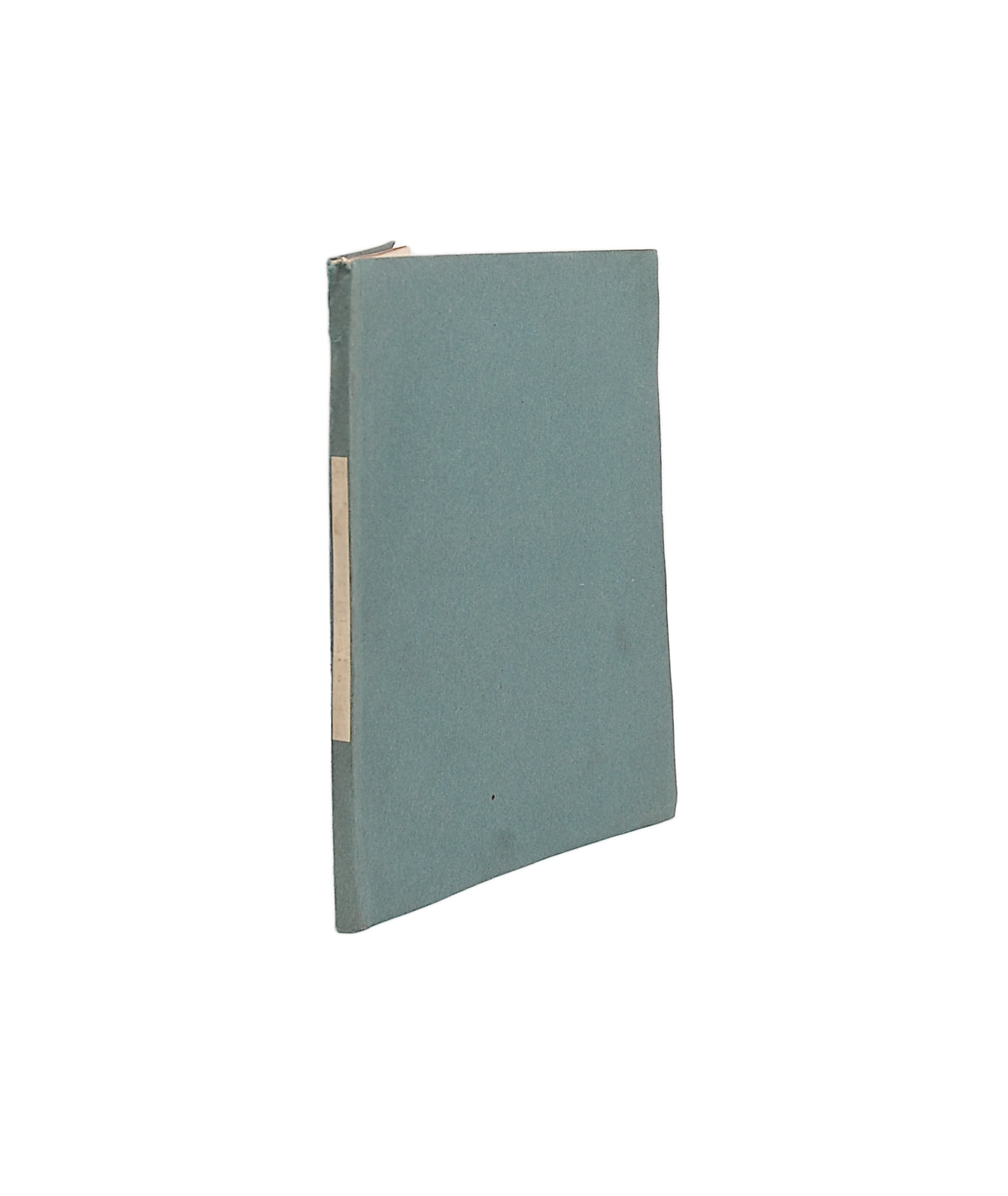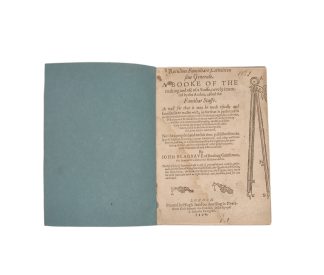BLAGRAVE, John
A Booke of the making and use of a Staffe, newly invented by the Author, called the Familiar Staffe
London, Hugh Jackson, 1590£3,750.00
FIRST EDITION. Small 4to. Pp. (viii) 70. Mainly Black letter. Tp woodcut of cannons and ‘familiar staffe’, floriated initials and headpiece, typographical ornaments. Geometrical woodcuts and diagrams throughout, illustrations of staffe and its uses in landscapes, ornamental woodcut tailpiece. Bookplate of Sir Peter Thompson F.R.S. on verso of tp. Ms. ‘No. 1’ at head of tp. Couple of contemporary annotations. Age yellowing, title page and next a bit soiled, intermittent water stain towards lower inner corners, mostly marginal. Shaved at head. Overall clean and good in modern blue wrappers.
First edition of this absorbing manual of mensuration by renowned English scholar John Blagrave (c.1560-1611). Blagrave’s mathematical studies at St John’s College, Oxford resulted in his earliest and most celebrated work, the Mathematical Jewel (1585) which describes his design for a planispheric astrolabe. The present work explores the many uses of a mathematical ‘staffe’ of Blagrave’s invention which could be used to calculated distances and height in different circumstances. The work commences with a dedicatory letter to his patron Sir Frances Knollys (c.1511/14-1596), a prominent English courtier who served Henry VIII, Edward VI and Elizabeth I. Blagrave enjoyed the patronage of this important figure from 1589 and 1596. The enterprising device is described in detail beginning p. 7: it is composed of two rulers with pointed tips, attached with a rounded joint and designed to open and shut. A series of diagrams describe the varying uses of the instrument, where the two rulers are opened to differing degrees and employed to measure an immense variety of conditions including the flatness of ground, a gunner’s quadrant, and how to safely scale a wall or a tower. Uses range from scholarly, to military, to naval, and each is described with charming clarity and accompanied by detailed woodcuts demonstrating geometrical calculations within differing landscapes. The device would have been particularly useful for artillerymen (Erwin Tomash p. 157). The invention and publication of such instruments was a fashionable practice during Blagrave’s era, with other contemporary notable innovations including the flushing toilet, the revolver and the backstaff.
An ornate bookplate indicates the ownership of Sir Peter Thompson (1698-1770). Thompson was an English merchant, MP, antiquarian and collector. He was both a Fellow of the Society of Antiquaries and a Fellow of the Royal Society. Thompson was born in Poole, Dorset, and travelled to London to seek a fortune. Following his successes, he was made High Sheriff of Surrey in 1745-6 and received his knighthood the same year. He relocated to St Albans where he was MP from 1747-1754. In his later years he accumulated a significant collection of books and antiquities, which he kept in his impressive town house in Poole.
STC 3118; ESTC S102659; not in Lowndes, Cockle or Honeyman.In stock












